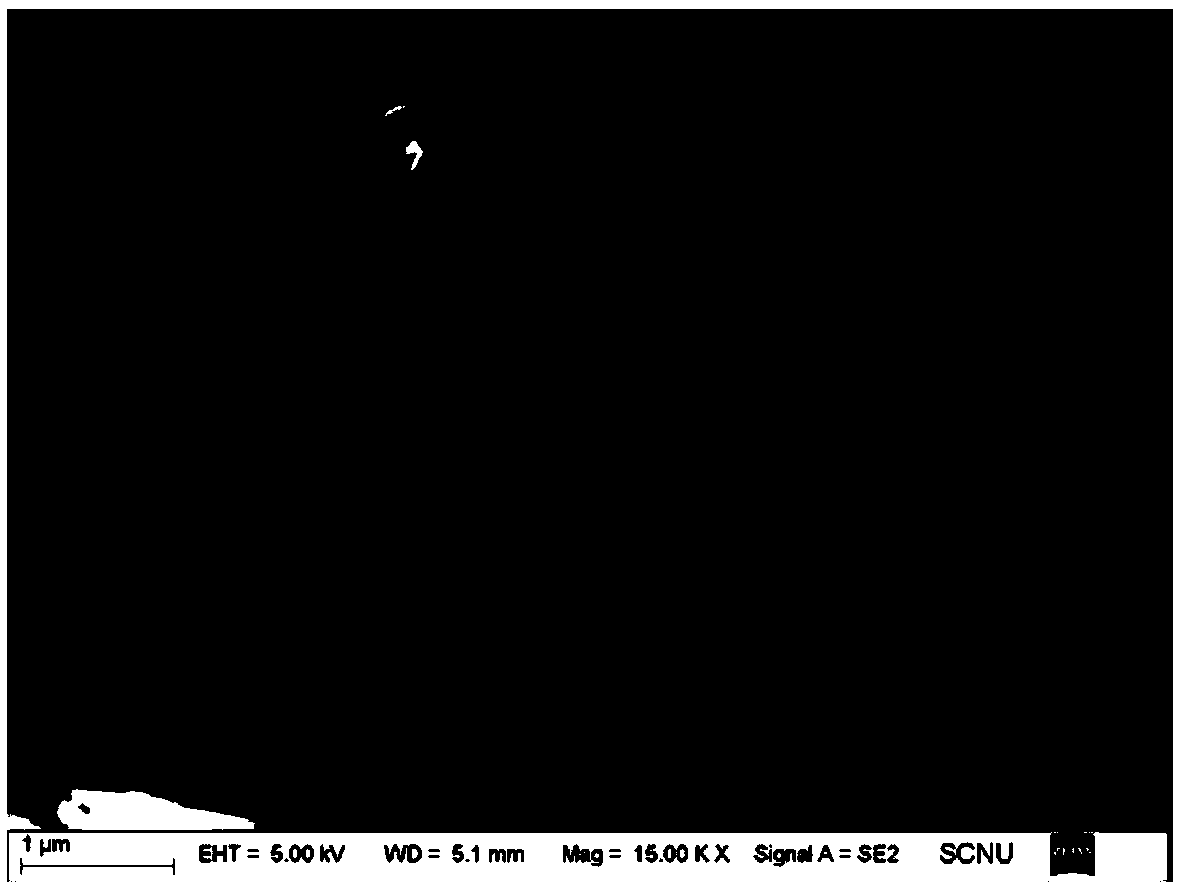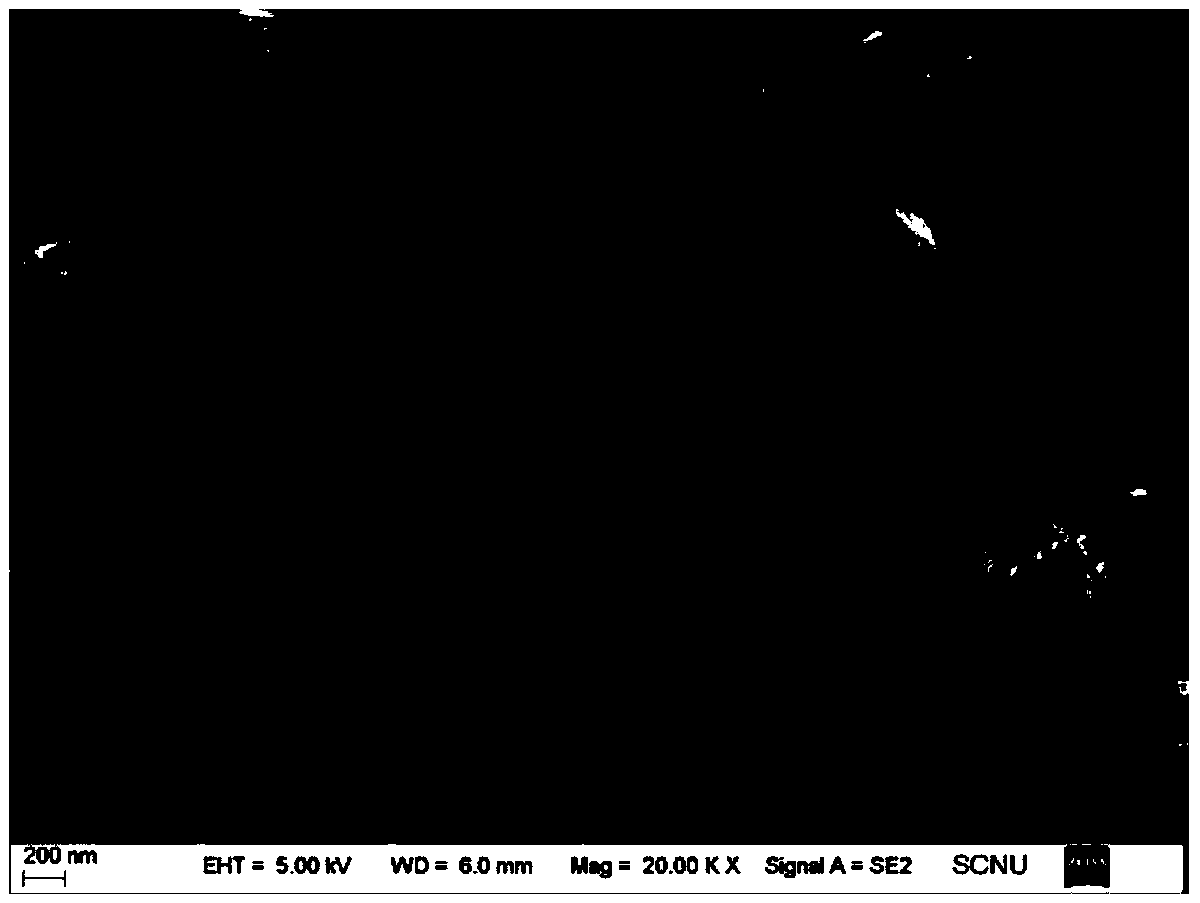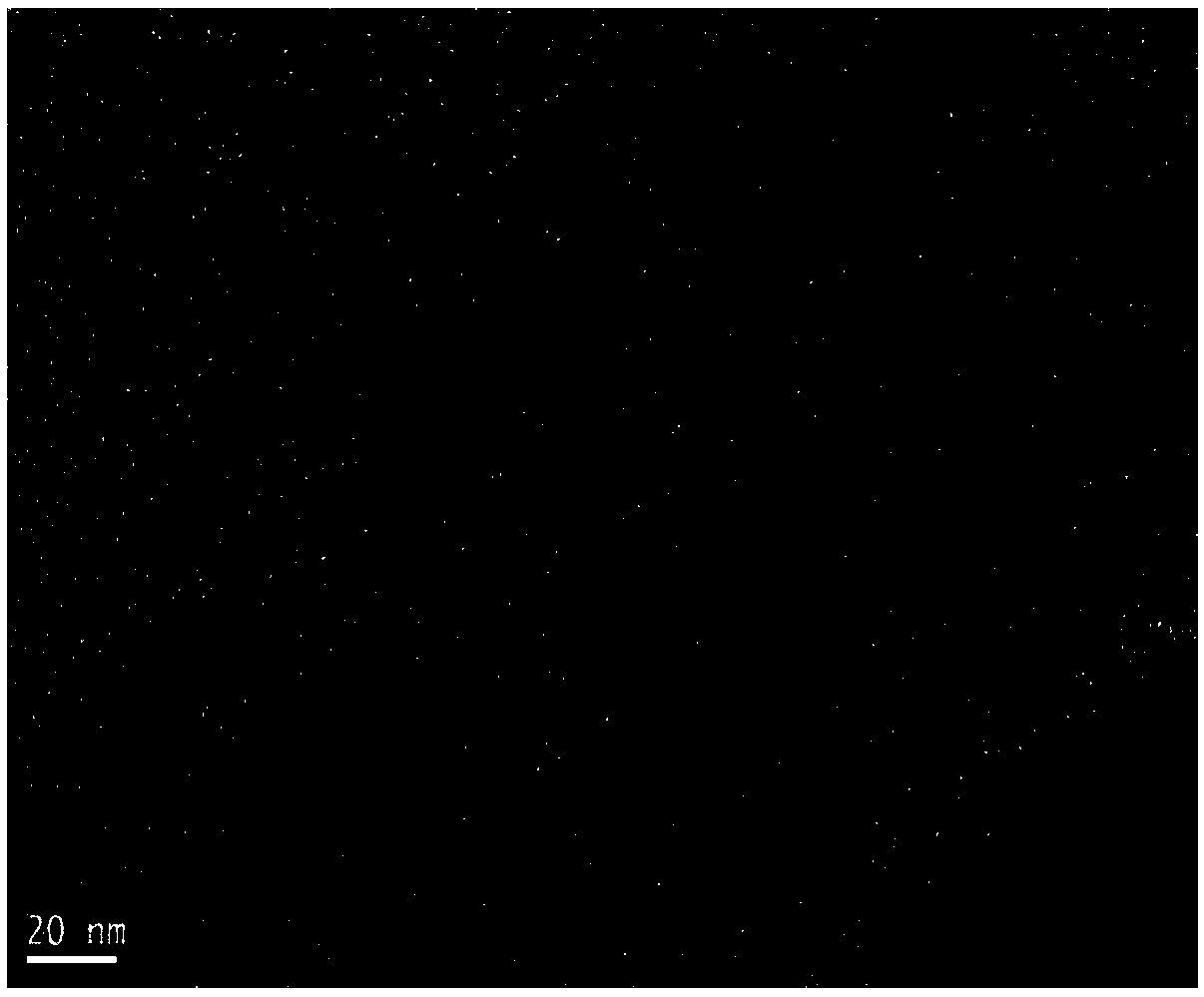Composite photocatalyst, and preparation method and application of composite photocatalyst
A catalyst and composite light technology, applied in chemical instruments and methods, physical/chemical process catalysts, chemical/physical processes, etc., can solve the problems of refractory antibiotics that have not been studied, and achieve obvious electrical conductivity and photocatalytic activity, no Toxic side effects, high degradation efficiency
- Summary
- Abstract
- Description
- Claims
- Application Information
AI Technical Summary
Problems solved by technology
Method used
Image
Examples
Embodiment 1
[0031] Take 3g dicyandiamide and 15g NH 4 Cl was fully mixed, stirred and dried at 80°C, then put the obtained material into a muffle furnace and raised the temperature to 550°C at a heating rate of 3°C / min, and reacted for 4 hours to obtain nanosheet layered C 3 N 4 , and its photo under the scanning electron microscope (SEM) at 15000 times magnification is as follows figure 1 As shown, it can be seen from the figure that compared with ordinary nitrogen carbide materials (C 3 N 4 ), the carbonized nitrogen (g-C 3 N 4 ) is a two-dimensional nanosheet structure with a hollow structure, which greatly increases the specific surface area of the material, thereby maximizing its degradation efficiency.
[0032] Then take 0.12 g of KBr, dissolve it in deionized water, and ultrasonicate for 5 min to form a uniformly dispersed solution. Take 0.7g of the above-mentioned nanosheet layered C 3 N 4 Added to the above solution, ultrasonic 5min. Then put in the amount of Bi(NO 3 ...
Embodiment 2
[0037] Get the nanosheet layered C in 0.1g embodiment 1 respectively 3 N 4 、C 3 N 4 / BiOBr and C 3 N 4 / BiOBr / black phosphorus was placed in 150mL, 10mg / L tetracycline solution, stirred under xenon lamp loaded with 1.5AM, 420nm filter, and reacted. First react in dark for 30min, and then take samples every 30min under the irradiation of xenon lamp.
[0038] Gained sample is centrifuged at last, tested under ultraviolet spectrophotometer (UV-vis), degradation effect is as follows: Figure 5 As shown, it can be seen from the figure that the degradation efficiency of the composite photocatalyst prepared by the present invention is as high as 85%.
[0039] Experimental result shows that composite photocatalyst of the present invention (C 3 N 4 / BiOBr / black phosphorus) has significant degradation efficiency for tetracycline antibiotics under light, improving the simple C 3 N 4 The degradation efficiency is low and the rate is slow.
Embodiment 3
[0041] Get C in 0.3g embodiment 1 3 N 4 / BiOBr / black phosphorus composite photocatalyst was placed in 100mL, 50mg / L tetracycline solution, stirred under xenon lamp loaded with 1.5AM, 420nm filter, and reacted. First react in dark for 30 minutes, and then take samples every 30 minutes under the irradiation of xenon lamp.
[0042] The final degradation efficiency can be as high as 85%, which has a relatively high degradation efficiency.
PUM
 Login to View More
Login to View More Abstract
Description
Claims
Application Information
 Login to View More
Login to View More - R&D
- Intellectual Property
- Life Sciences
- Materials
- Tech Scout
- Unparalleled Data Quality
- Higher Quality Content
- 60% Fewer Hallucinations
Browse by: Latest US Patents, China's latest patents, Technical Efficacy Thesaurus, Application Domain, Technology Topic, Popular Technical Reports.
© 2025 PatSnap. All rights reserved.Legal|Privacy policy|Modern Slavery Act Transparency Statement|Sitemap|About US| Contact US: help@patsnap.com



